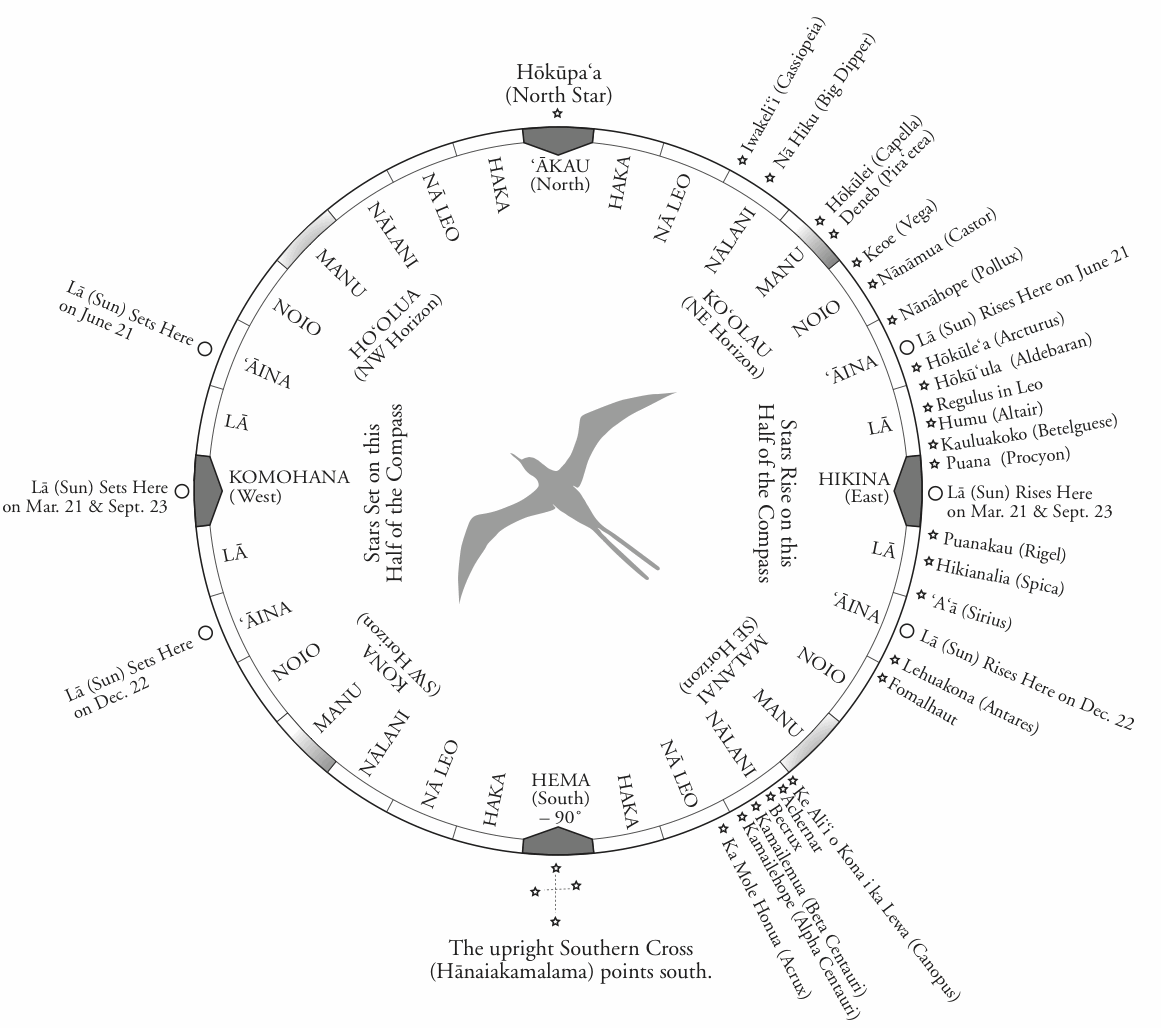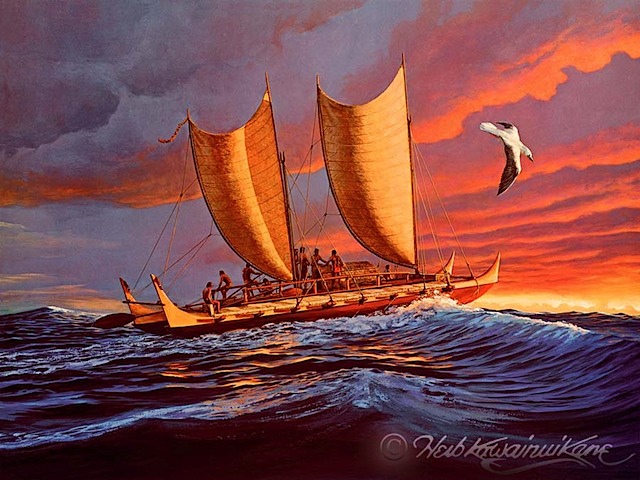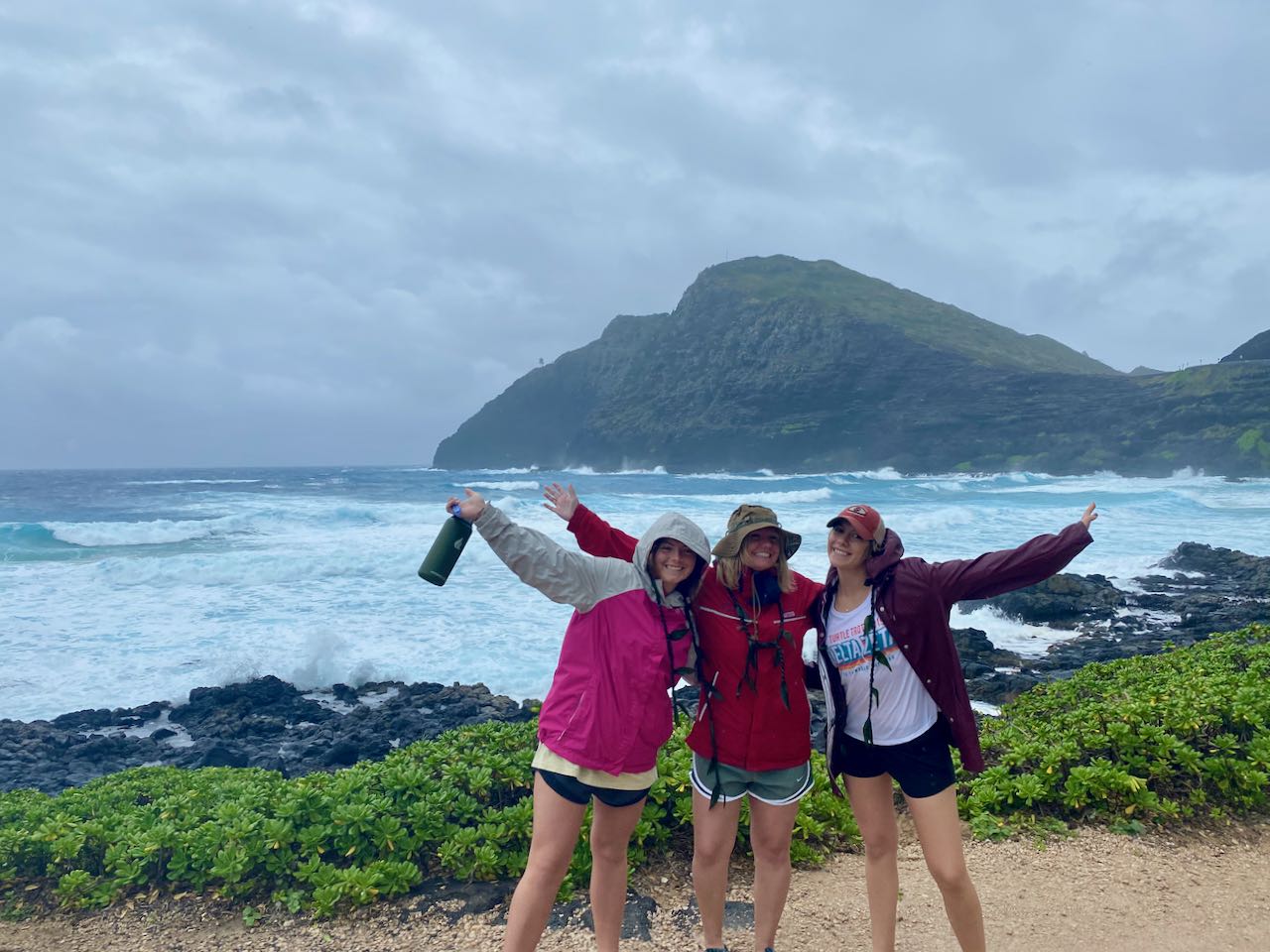We spent just 17 hours in port in Honolulu on January 12.
The evening before we arrived in Hawaii, we had a raucous all-ship’s meeting in the large classroom. It was standing room only. The atmosphere was electric — after 8 days at sea, we were SO ready to disembark and begin our land adventures! Semester at Sea leadership briefed all of us about the logistics of getting hundreds of students through immigration and passport control (because we sailed from Mexico), onto local transport (buses mostly), staying safe on shore, and how to get back aboard at the end of the day.
I led my oceanography students on a field class. The weather was chilly, windy, with intermitted rainshowers. Temperature was in the mid-70s F, but there were long stretches of cold downpour.
Thirty-two of us disembarked and boarded a bus where we met Max, our local guide. Max taught us some Olelo Hawaiian phrases as we drove across the city and eventually climbed up and over a ridge to the east. Coastal views were just spectacular, with high green mountainsides plunging into aquamarine seas with enormous crashing surf.
Our first stop was at Makapu’u Beach, where we were planning to do a beach cleanup. The surfc was so powerful that walking on the beach itself was unsafe, but we had an amazing presentation by Austin Kino (http://www.hokulea.com/crew-profile-austin-kino/).
Austin is 25 years old and has been involved with Polynesian voyaging since he was in high school. He is a crewmember and apprentice navigator on Hōkūle‘a, a restored Polynesian voyaging canoe built and operated by the Polynesian Voyaging Society. Austin gathered our group in the forest above the beach and spoke with us as we sheltered from the cold rain under the eaves of a building.
He spread a canvas on the ground that shows the Polynesian navigation star compass. The compass is a mental map dividing the horizon into 32 slices of equal size. The boat is always in the center of the compass, and the navigator uses the compass to hold the voyage to a certain course. The compass position of celestial events like the rising and setting of the Sun, Moon, and about 100 named stars are key waypoints. During the day or during cloudy nights, the direction of the waves and wind are also used to maintain course.
Polynesian navigators don’t use instruments like compasses or GPS, or even sextants or clocks. Periodically, the navigator will toss a small bit of bark or cracker off the bow and count “one-one-thousand; two-one-thousand; …” to gauge the speed of the boat. The navigator uses the heading, speed, and the mental map to track how far they’ve gone and to keep track of position across thousands of miles of trackless open ocean. Sea birds convey information about both the distance and direction of land. The navigator must not sleep during the crossing, because it is imperative to remain aware of course and position at all times.
The first voyage of Hōkūle‘a was in 1976, when she sailed from Hawaii to Tahiti. This was the first voyage in the Polynesian tradition in centuries, and upon arrival in Pape’ete half the population of Tahiti came out to welcome the crew. Many voyages followed, and Hōkūle‘a has recently returned from a 4-year voyage around the world.
The technical achievement of global ocean voyaging and navigation without instruments is truly staggering. It takes incredible skill and mental discipline to hold a precise course over weeks of open ocean travel.
As Austin explained to us, the bigger significance of Hōkūle‘a is the revival of native culture and pride among Hawaiians and their Polynesian cousins.
My European ancestors inherited a culture from Ancient Greece and Rome. Greeks and Romans sailed the Mediterranean more than 2000 years ago, but they mainly stayed within sight of land. Open sea crossings in the Mediterranean were fairly rare and very dangerous. At the time of Roman sea-going commerce, the Polynesians had already been skillfully navigating the open Pacific for 3000 years!
Polynesian culture originated on the island we now call Taiwan around 3000 BC. Voyagers carried pigs, chickens, and taro on their canoes and settled virtually every island in the Pacific over a period of millennia. Their societies developed differently according to the conditions and resources they found on each island. Some of their greatest achievements were on the largest mountainous islands of New Zealand, Tahiti, and especially Hawaii, which they settled around 900 AD.
Europeans’ first contact with Hawaii was during the voyage of British Captain James Cook in 1778. It’s estimated that there were about 600,000 people living in Hawaii at that time.
The story of European invasion and conquest of Hawaii is tragic. The native population collapsed due to epidemic diseases for which the people had no immunity. Enormous monoculture fields of pineapple and palm oil replaced vital subsistence crops. Native schools were closed and the Olelo Hawaii language languished.
The movement to build and sail voyaging canoes from the 1970s onwards has been a fantastic source of pride and renewal among native Hawaiians. To support the many voyages of Hōkūle‘a, young crew and navigators have been recruited and trained across the islands.
Ancient Polynesian voyagers carried everything they needed to survive on their canoes for journeys of many months. Water, livestock, and other supplies were supplemented by fishing from the open sea. Voyagers had to care for one another and their precious cargo in order to survive the journey.
Austin Kino taught us a moving phrase in Olelo Hawaii:
“He wa’a he moku; He moku he wa’a.”
This means “our canoe is our island; our island is our canoe.”
Just as they learned to be completely self-sufficient on their canoes, so the native Polynesians knew how to be completely self-sufficient on their island homes. Careful land and ocean stewardship allowed these incredibly skilled people not just to survive but to thrive all across the wild Pacific Ocean.
The 21st Century culture of the islands doesn’t support itself in this way. Virtually all energy, food, and material is shipped in from the mainland. If shipping were to stop, the lights would go dark very quickly since most electricity isgenerated using imported diesel fuel. There is less than three weeks of food on the islands, and local agriculture and aquaculture is woefully inadequate for the population of 1.6 million.
My oceanography students were deeply moved by this presentation, remaining in rapt attention even during the pouring rain.














